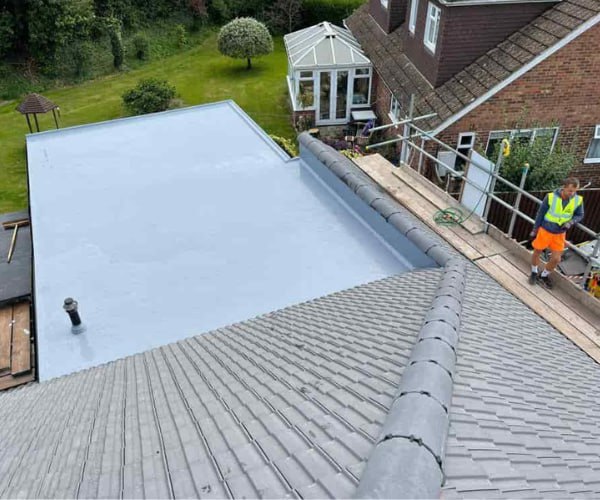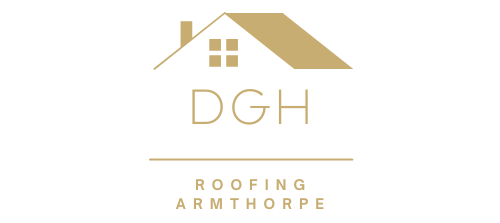How Commercial Roof Repairs Can Enhance Your Building’s Energy Efficiency
When managing a commercial building, energy efficiency is often a top priority for reducing operational costs and maintaining a comfortable environment. One area that is frequently overlooked but plays a crucial role in energy performance is the condition of the roof. At DGH Roofing Armthorpe, based in Armthorpe, Doncaster, we understand how important it is to keep your roof in optimal condition to maximise energy efficiency. In this blog post, we’ll explore how commercial roof repairs can help enhance your building’s energy efficiency and save you money in the long run.
Why Your Roof Impacts Energy Efficiency
The roof is one of the largest surface areas of any commercial building, and it serves as a barrier between the interior and external elements. A well-maintained roof helps regulate indoor temperatures by providing insulation and preventing heat transfer. However, if the roof is damaged or deteriorating, it can result in energy loss, leading to higher heating and cooling costs.
Key ways your roof affects energy efficiency:
- Heat Loss and Insulation
A damaged or poorly insulated roof allows heat to escape during colder months and lets excess heat in during warmer weather. This increases the workload on your HVAC system, causing energy bills to rise. Repairs such as fixing cracks, sealing gaps, or upgrading insulation can significantly improve energy retention, keeping your building more comfortable while reducing energy consumption. - Moisture and Ventilation Issues
A leaking roof can lead to moisture build-up, which can affect insulation materials and reduce their effectiveness. Additionally, poor roof ventilation can cause hot air to become trapped, making your cooling systems work harder. Addressing moisture and ventilation issues through timely roof repairs ensures that your building’s insulation remains intact and your HVAC systems function efficiently. - Reflective Roof Surfaces
If your commercial building has a flat or low-slope roof, the roofing material can play a major role in reflecting sunlight. Older roofing materials may absorb more heat, causing the building to warm up unnecessarily. Replacing worn-out roofing with reflective materials or coatings can help reduce the amount of heat absorbed, which in turn lowers the demand on your air conditioning systems.
Commercial Roof Repairs That Enhance Energy Efficiency
- Repairing Leaks and Cracks
Roof leaks and cracks not only compromise the structural integrity of your building but also lead to significant energy loss. Water ingress damages insulation, reducing its effectiveness, and allows air to escape, leading to increased heating and cooling demands. Promptly repairing any leaks or cracks will help maintain proper insulation levels and prevent energy waste. - Upgrading Roof Insulation
Many commercial roofs, particularly older ones, are under-insulated. Roof repairs offer the perfect opportunity to assess your insulation levels and make improvements. Adding or upgrading insulation materials during a repair can dramatically enhance the roof’s ability to retain heat in winter and reflect it in summer, resulting in substantial energy savings over time. - Improving Roof Ventilation
Ventilation is essential for regulating temperature and moisture levels in your building. A well-ventilated roof allows warm air to escape during hot weather and prevents condensation build-up, which can damage insulation. Repairing or adding roof vents as part of your roof maintenance plan helps to maintain a balanced airflow, improving energy efficiency throughout the building. - Applying Cool Roof Coatings
For flat or low-slope commercial roofs, cool roof coatings are an excellent solution for improving energy efficiency. These reflective coatings reduce the amount of heat absorbed by the roof, keeping the building cooler in summer. By applying a cool roof coating during a repair or re-roofing project, you can significantly reduce cooling costs and create a more energy-efficient building. - Regular Roof Maintenance
Preventative maintenance is key to keeping your commercial roof energy efficient. Regular inspections and minor repairs help prevent small issues from escalating into major problems that can compromise insulation and ventilation. Scheduling routine roof maintenance ensures that your roof remains in good condition, preventing energy loss and prolonging the lifespan of the roof.
The Benefits of Commercial Roof Repairs for Your Business
Investing in roof repairs doesn’t just help improve energy efficiency—it also delivers a range of other business benefits:
- Reduced Operating Costs: By improving your building’s energy efficiency, you can lower your heating and cooling expenses, reducing overall operational costs.
- Increased Comfort: A well-maintained, energy-efficient roof keeps indoor temperatures more consistent, improving comfort for employees, customers, or tenants.
- Environmental Responsibility: Enhancing your roof’s energy efficiency can reduce your building’s carbon footprint, contributing to your company’s sustainability goals.
- Extended Roof Lifespan: Regular repairs and maintenance help to prolong the life of your commercial roof, saving you from costly replacements in the future.
Conclusion
Commercial roof repairs are an essential part of maintaining an energy-efficient building. From sealing leaks and improving insulation to applying reflective coatings and ensuring proper ventilation, taking care of your roof can significantly reduce energy costs while improving the comfort and sustainability of your commercial property. At DGH Roofing Armthorpe, we specialise in providing expert roofing repairs and maintenance to help businesses in Armthorpe, Doncaster, optimise their energy efficiency.
Call us on: 01302 490 285
Click here to find out more about DGH Roofing Armthorpe
Click here to complete our contact form and see how we can help with your Roofing needs.

